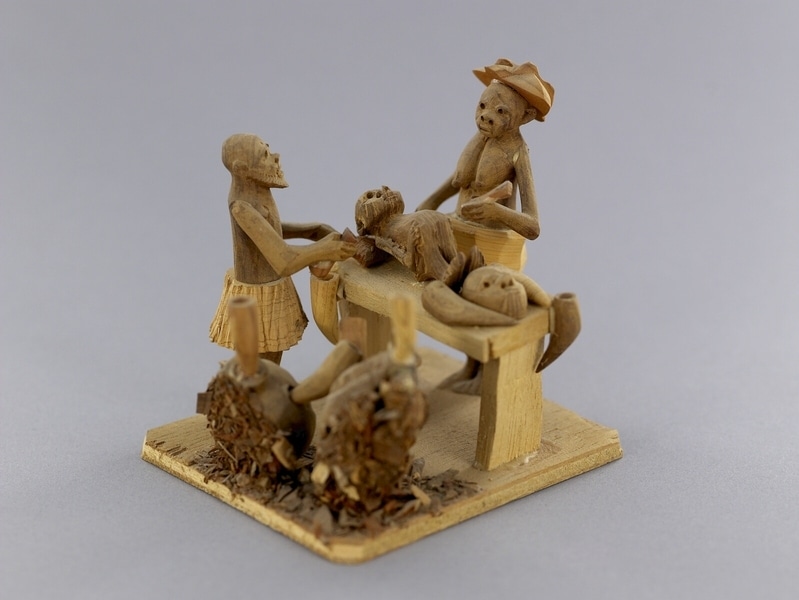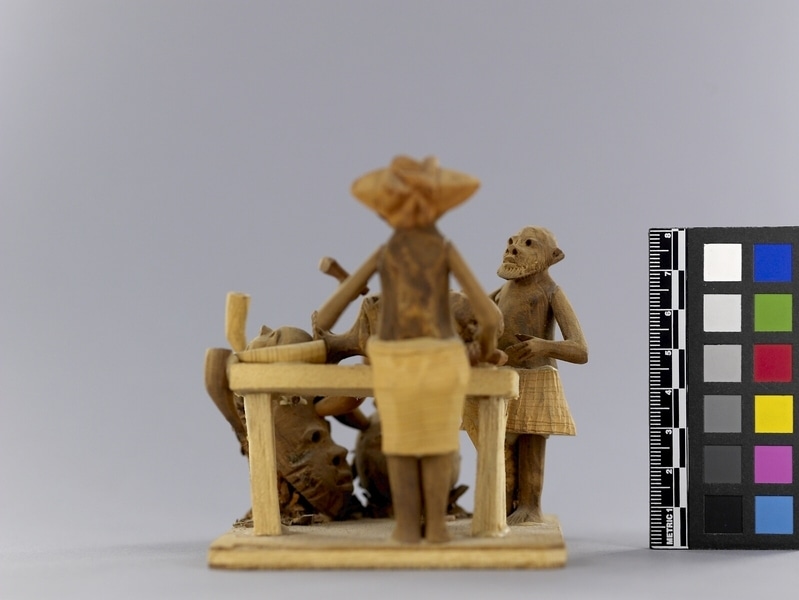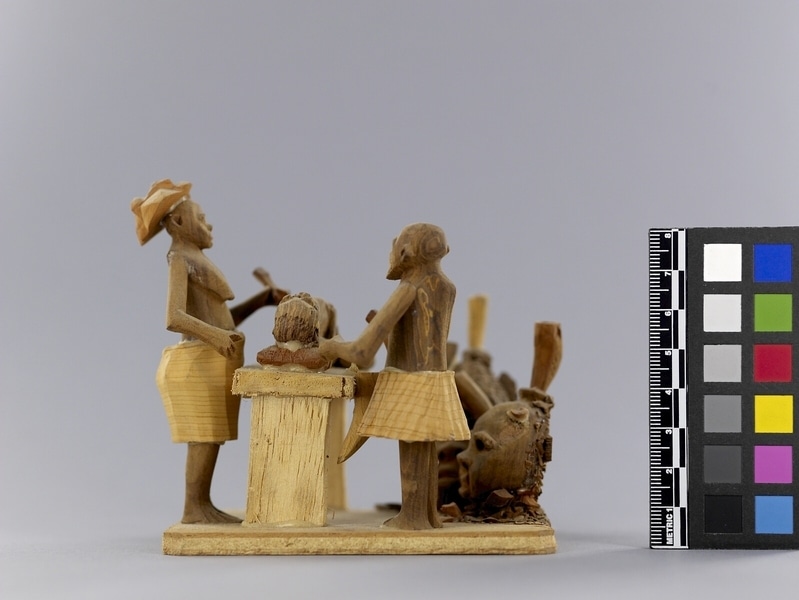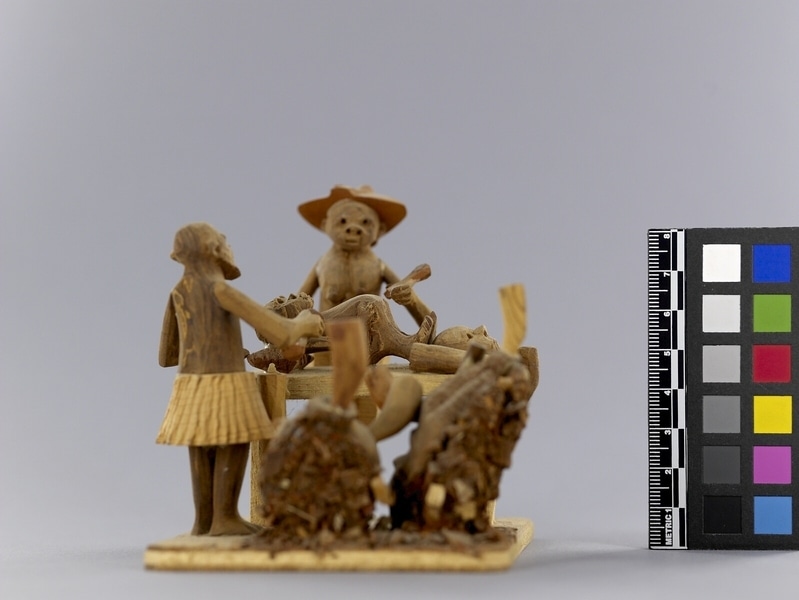Thorn Carving Item Number: Af418 from the MOA: University of British Columbia





Description
A nude woman is lying on a narrow table, with her head on a small pillow, giving birth. Feet are resting against a carved human face with a horn vessel lying on each side. A horn vessel is hanging on the foot of the table and another at the head on the side. A female midwife with a hat and a skirt is standing beside the table holding a small object over the woman's abdomen. On the other side, there is standing, a bearded man with a short skirt, holding a small vessel in his right hand. On the floor in the corner are two large carved human heads, one of which has braided hair, like a priest, and supports three horned vessels while the other is smaller and has two horn vessels. Figures, ritual heads, and three horns are dark brown. Clothes and three horns are light yellow-brown. Hat, four horns, and the pillow are light red-brown. The table and the base are light brown wood.
History Of Use
Thorn carvings are miniatures depicting scenes from Nigerian life. This type of carving began circa 1930. Thorns are carved by men and vary in size. They can be as large as 12.7 cm long and 9.6 cm wide. They are comparatively soft and easily carved.
Cultural Context
craft; tourist art
Iconographic Meaning
Carving depicts a traditional maternity scene. The presence of ritual heads, horns and mask symbolizes the administration of traditional medicine. In this case, it appears that grandparents are using ritual horns, which are said to have extraordinary strength or power.
Specific Techniques
The light yellow-brown thorn and the dark brown thorn come from the ata tree; the light red-brown thorn comes from egun trees. The parts are glued together with viscous paste made from rice cooked with water.
Narrative
This thorn carving was made specifically for the donors by the artist.
Item History
- Made in Nigeria before 1972
- Collected during 1972
- Owned by Andrew Stewart and Jessie Stewart before February 8, 1980
- Received from Andrew Stewart (Donor) and Jessie Stewart (Donor) on February 8, 1980
What
- Name
- Thorn Carving
- Identification Number
- Af418
- Type of Item
- carving
- Material
- egun thorn, atum thorn, rice adhesive and wood
- Manufacturing Technique
- carved and glued
- Overall
- height 9.7 cm, width 10.0 cm, depth 9.0 cm
Who
- Culture
- Yoruba
- Previous Owner
- Andrew Stewart and Jessie Stewart
- Received from
- Andrew Stewart (Donor) and Jessie Stewart (Donor)
Where
- Holding Institution
- MOA: University of British Columbia
- Made in
- Nigeria
When
- Creation Date
- before 1972
- Collection Date
- during 1972
- Ownership Date
- before February 8, 1980
- Acquisition Date
- on February 8, 1980
Other
- Item Classes
- carvings & sculpture
- Condition
- good
- Accession Number
- 0590/0104